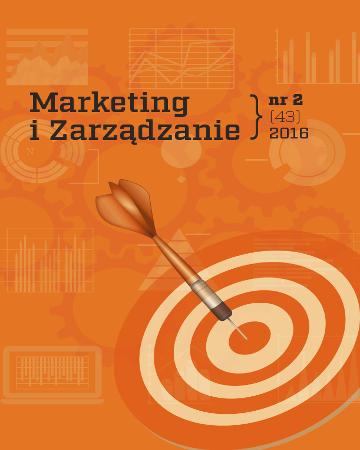
ISSN: 2450-775X
eISSN: 2353-2874
OAI
DOI: 10.18276/miz.2016.43-07



Lista wydań /
nr 2 (43) 2016
Wybrane spin out Uniwersytetu Otago (zarys problematyki)
| Autorzy: |
Kazimierz
Krupa
Uniwersytet Rzeszowski, Wydział Ekonomii |
| Słowa kluczowe: | start-up spin out zarządzanie |
| Data publikacji całości: | 2016 |
| Liczba stron: | 8 (83-90) |
Abstrakt
Uniwersytet Otago jest jednym z ważnych liderów promujących komercyjne wykorzystanie IP własnych pracowników naukowych. Buduje się w nim również inspirujące powiązania badawcze z sektorem prywatnym. Realizują je trzy wyspecjalizowane podmioty: Centrum Badań i Rozwoju, Otago Innovation Ltd., Centrum Innowacji Uniwersytetu Otago. Centrum Innowacji Uniwersytetu Otago (CIUO) jest ośrodkiem działającym na styku badań i biznesu, łącząc spin out Uniwersytetu Otago oraz firmy start-up z innymi podmiotami gospodarczymi, również często należącymi do MSP. W rezultacie CIUO od wielu lat skutecznie ułatwia implementację rezultatów kreatywnych technologii dostosowując je do zasad rynkowej komercjalizacji, dziś już zazwyczaj globalnej.
Pobierz plik
Plik artykułu
Bibliografia
| 1. | Aimers, J., Walker, P. (2003). Structures and Strategies: a narrative analysis of eleven community organisations in Otago. Otago: Department of Community and Family Studies, University of Otago. Monograph series, December. |
| 2. | Boon, B., Farnsworth, J. (2015). Social exclusion and poverty: Translating social capital into accessible resources. Dunedin: Social Policy & Administration. |
| 3. | Boon, B., Jones D., Curnow, B. (2009). Out of the Blue: The dark side of creative enterprise. Culture and Organisation, 15 (3–4), 361–377. |
| 4. | Bould, N. (2010). Sustainable Design Education in New Zealand (2010). Department of Geography Post-Graduate Symposium, Department of Geography. Dunedin: University of Otago. |
| 5. | Bould, N. (2009). Sustainable Design Education: A journey towards environmental activism. Paper presented at the JENESYS Program 2008/2009, Tokyo, Japan. |
| 6. | Bould, N. (2009b). Sustainable Design Education in New Zealand. International Association of Societies of Design Research [IASDR] 2009 Conference, Seoul, Korea. |
| 7. | Farnsworth, J., Boon, B. (2010). Analysing group dynamics within the focus group. Qualitative Research, 10 (5), 605–624. DOI: 10.1177/1468794110375223. |
| 8. | Fox, A. (2015). Neuroscience and the reaction against postmodernist critical theory. Verbal presentation at the what [in the World] Was Postmodernism? SYMPOSIUM. Dunedin, New Zealand. |
| 9. | Fox, A. (2008). The ship of dreams: Masculinity in contemporary New Zealand fiction. Dunedin, New Zealand: Otago University Press, 230p. |
| 10. | Harding, J.E. (2012). Divine knowledge in the book of Job and 4QInstruction. W: D. Burns, J.W. Rogerson (red.). Far from minimal: Celebrating the work and influence of Philip R. Davies (173–192). London: T & T Clark. |
| 11. | Hippel, E. (1995). The Sources of Innovation. New York: Oxford University Press. |
| 12. | Jacob, E., Johnson, H. (red.). (2014). Asia in New Zealand Lives. Spec. issue of the New Zealand Journal of Asian Studies 16.2. |
| 13. | Jacob, E. (red.). (2008). Representing Asia, Remaking New Zealand in Contemporary New Zealand Culture. Spec. issue of New Zealand Journal of Asian Studies, 10 (1). |
| 14. | Scott, J.H. (2015). Transactions and Proceedings of the New Zealand Institute. Contribution to the Osteology of the Aborigines of New Zealand and the Chatham Islands, 26 (1–64, 24p. |
| 15. | Shogimen, T., Spencer, V.A. (red.). (2014). Visions of peace: Asia and the West. Farnham, UK: Ashgate. |
| 16. | Shogimen, T. (2014). Genron Yokuatsu: Yanaihara Jiken no Kozu (The suppression of speech: Mapping the Yanaihara Incident). Tokyo: Chuo Koron Shinsha. |